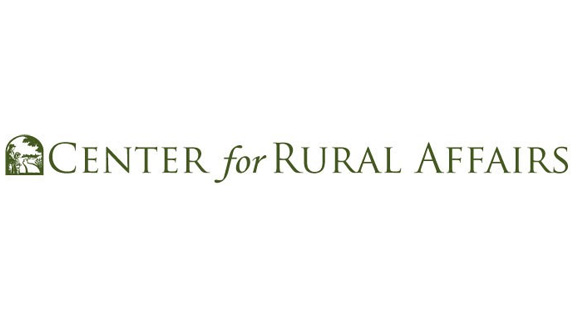Farm & Ranch
Apply Now for Value Added Producer Grants

By John Crabtree, [email protected], Center for Rural Affairs
USDA is accepting applications for $44 million in competitive Value Added Producer Grants to develop value added ventures. In times of low commodity prices, the help available through this program is especially appealing.
The grant program gives priority to projects that expand opportunities for small and mid-sized family farms and for beginning, socially disadvantaged, and military veteran farmers and ranchers. Local food marketing projects are eligible as well, particularly for distribution systems that increase the return to the farmer.
Grants assist farmers and ranchers in starting and expanding ventures that increase the value of raw farm and ranch products. Marketing unique and high quality food products – local, natural, organic, etc. – also adds value.
The deadline for paper applications is July 1. Online applications need to be completed by June 24. Our friends at the National Sustainable Agriculture Coalition released their annual Farmer’s Guide to the VAPG Program. It includes a step-by-step description of the application process. You can find it here:http://sustainableagriculture.net/publications/.
In small town America, one of the best strategies for creating jobs and expanding economic opportunities is fostering entrepreneurship and small business development. On rural America’s family farms and ranches, that means value added and niche market ventures.
Moreover, creating these ventures fosters entrepreneurship, keeps wealth in rural communities, enhances farm and ranch profitability, revives rural mainstreets and creates opportunities for young families to return to rural America.
State USDA Rural Development offices are available for assistance: http://www.rd.usda.gov/contact-us/state-offices.
###
Established in 1973, the Center for Rural Affairs is a private, non-profit organization working to strengthen small businesses, family farms and ranches, and rural communities through action oriented programs addressing social, economic, and environmental issues.
Farm & Ranch
Managing Show Cattle Through The Winter

By Heather Welper
Husband and wife duo, Heather and Calvin Welper, are the Co-Owners and Operators or Two C Livestock, located in Valley View, Texas.
The pair’s operation has a show cattle focus where they raise and sell purebred heifers of all breeds and club calf Hereford steers.
When it comes to show cattle, the Welpers know a thing or two including how to prepare for the cold winter months and the Texas major show season run.
To read more, pick up a copy of the November edition of North Texas Farm & Ranch magazine, available digitally and in print. To subscribe by mail, call 940-872-5922.

Farm & Ranch
Double M Ranch & Rescue

By Hannah Claxton, Editor
As the sun rises each day, so do the dozens of mouths that Meghan McGovern is responsible for getting fed. Rather than the sounds of a rooster crowing, McGovern hears the bellows and bleats of a variety of exotic deer, the chortle of kangaroos, the grunts of water buffaloes, and the chirps of a lemur.
Nestled against the banks of the Red River, the Double M Ranch and Rescue, with its high game fences and deer sprinkling the landscape,s its in stark contrast to the surrounding ranches.
“Having deer is kind of like eating potato chips- you can never actually have just one,” said McGovern with a laugh.
McGovern has several herds to take care of- fallow deer, axis deer, water buffalo, goats, and bison. In smaller numbers, there’s also a few kangaroos, a lemur, a potbelly pig, a pair of zebras, a watusi, and a few horses.
To read more, pick up a copy of the November edition of North Texas Farm & Ranch magazine, available digitally and in print. To subscribe by mail, call 940-872-5922.

Farm & Ranch
Acorn Toxicity

By Barry Whitworth, DVM, MPH
With the prolonged drought, most pastures in Oklahoma end up in poor condition. With the lack of available forage, animals may go in search of alternative foods.
If oak trees are in the pastures, acorns may be a favorite meal for some livestock in the fall. This may result in oak poisoning.
Oak leaves, twigs, buds, and acorns may be toxic to some animals when consumed.
To read more, pick up a copy of the November edition of North Texas Farm & Ranch magazine, available digitally and in print. To subscribe by mail, call 940-872-5922.

-

 Country Lifestyles2 years ago
Country Lifestyles2 years agoScott & Stacey Schumacher: A Growth Mindset
-

 Country Lifestyles8 years ago
Country Lifestyles8 years agoStyle Your Profile – What your style cowboy hat says about you and new trends in 2017
-

 HOME8 years ago
HOME8 years agoGrazing North Texas – Wilman Lovegrass
-

 Outdoor10 years ago
Outdoor10 years agoButtercup or Primrose?
-

 Country Lifestyles5 years ago
Country Lifestyles5 years agoAmber Crawford, Breakaway Roper
-

 Equine1 year ago
Equine1 year agoThe Will to Win
-

 Country Lifestyles9 years ago
Country Lifestyles9 years agoJune 2016 Profile – The man behind the mic: Bob Tallman
-

 Country Lifestyles8 years ago
Country Lifestyles8 years agoDecember 2016 Profile, Rusty Riddle – The Riddle Way




